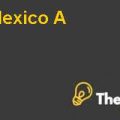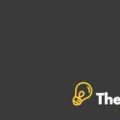
Best Buy Inc. Dual Branding in China
Background
Best Buy was founded in 1966 by Richard Schulze, who was an American entrepreneur. In 2006, the company’s Senior Vice President was John Nobel; it was adivision of the Best Buy Inc. known as the largest and leading retailer in the Consumer Electronics (CE) Industry in the United States faced a significant branding decision. Best Buy had also acquired bulk of stake in Jiangsu Five Star Appliances, which was the third biggest appliances and consumer electronics retailer in China. The success of Five Star resulted in the establishment of around 135 new stores in China, Best Buy decided to launch its first store in China in December 2006 followed by two other stores in the next one and a half year time period. Five Star also launched its own program by opening 25 more stores in China by using Five Star Banner. Best Buy decided to further expand the United States market in December 2000; they had identified Canada as the best place to invest. The Canadian consumer market was totally fragmented due to the dominance of the Future Shop. Best Buy’s goal and objective was to launch its own stores in different Canadian cities so as to gain competitive advantage over Future Shop stores. Initially, Best Buy had planned to start up stores in the Toronto region in 2003 and later on decided to launch a three year program based on market expansion via introducing 15 stores in top Canadian cities. Best Buy Inc. aimed to launch around 60 to 65 new stores in different Canadian regions as they faced a huge competition from Future Shop who had already 95 stores in the market and further planned to reach to the figure of 120 over the next four years.
In the late 2001, top management of the Best Buy International and Future Shop decided to merge and work with each other. They believed that in case both the companies worked together, they could bring more revenues and business as compared to working separately. As a result, Best Buy had bought 100 percent ownership in Future Shop. Suddenly, the management of the Best Buy took a surprising decision to hold the Future Shop brand image to compete successfully in the market as an independent brand. As a result of this initiative, Best Buy faced a typical task to implement a “Dual Branding” strategy. The founder of the Best Buy, Richard Schulze had some concerns over this strategy, although he was not completely criticizing that strategy but his point of view was that this strategy was never been implemented in the past.
Introduction
Best Buy International was offering services in the field of consumer electronics inducing music and audio components sourced from different vendors. During the period of economic recessions in 1970’s, the company faced lot of economic threats while designing and implementing their policies. In the beginning of the 1980’s, launch of video cassette recorder boosted the music chain industry into retailing video components. Six years later, Best Buy restructured its retailing plan in different ways. They introduced self-service program and the sales professionals were getting fixed pay compensation by receiving commissions subject to their performance level. The entire purpose of this strategy was to motivate customers and keep them updated with the latest technology by providing various products and services as per their own preferences and needs of shopping in a customer oriented environment.
The decision to stop paying commissions and just providing fixed salaries to the salespersons was not successful for the company. Best Buy quickly realized that its customers were encouraging the new strategy of providing affordable and better quality product of its stores. Best Buy had identified another development in digital devices and home appliances networks, which were gradually growing with the passage of time. The company had focused on marketing strategy and increased its efforts to promote it. In the late 2002, the company had acquired a Minneapolis-based dealing in repairing and installing PC’s called “Geek Squad”. They realized that without the implementation of technology, they could not succeed in the market, they were targeting the age group between 15 to 39 male customers, who were highly educated and financially strong and could afford their products and services. Best Buy Inc. was utilizing the importance of the technology factor and was building its brand image on the basis of encouraging fun, honesty, young and techno-savvy.
In the end of the 1990’s, Best Buy launched a Standard Operating Platform (SOP) for duplication across the chain, which consisted of various procedures such as inventory management, transaction processing, customer relations, store administration, product merchandizing and sales. The implementation of SOP had a positive effect on the company and helped it to ensure consistency level up to the required level. In .................
This is just a sample partial case solution. Please place the order on the website to order your own originally done case solution.
A month after Best Buy Inc (Best Buy), the largest retailer of consumer electronics in the United States, acquired Five Star, the third-largest retailer of appliances and consumer electronics in China in May 2006, the management of Best Buy weighs in on branding option. If Star lose its identity and be sold as Best Buy? Or Best Buy store brand Five Star, and let the two brands compete with each other in the Chinese market? Option makes sense DJ-vu, because when he first left his native land in January 2002 through the acquisition of Future Shop, the largest consumer electronics retailer in Canada, Best Buy has faced a similar dilemma. The company decided at the time, in favor of a dual brand strategy. It worked. There was no evidence of cannibalization, the biggest risk of double branding. Best Buy and Future Shop both grew up together as independent brands in Canada. But, does double duty brand strategy in very different retail environment in China? "Hide
by Niraj Dawar, Ramasastry Chandrasekhar Source: Richard Ivey School of Business Foundation 17 pages. Publication Date: June 10, 2009. Prod. # 909A16-PDF-ENG













